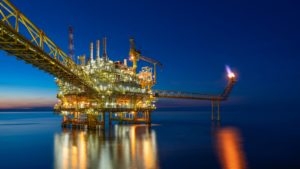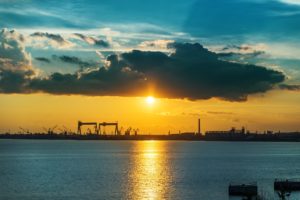

The list of projects that fall under the overall Mozambique Gas development include:
CORAL FLOATING LIQUID NATURAL GAS (FLNG) PROJECT
The world’s first ultra-deep-water FLNG facility is expected to produce its first gas in 2022. A floating LNG plant is a ship on which LNG is produced and stored. The Coral FLNG has announced it has successfully installed the first topside power generation module onboard the hull of the FLNG. Coral-Sul FLNG, the first deep-sea floating natural gas liquefaction plant in the world, is set to produce approximately 3.4-million tons of liquefied gas per year. It will extract natural gas from a depth of around 2 000 meters in Area 4 of the Rovuma Basin. Despite the adverse effects of the COVID-19 pandemic on world markets, the partners in Area 4 of the Rovuma Basin, Cabo Delgado, have reaffirmed their projections to start natural gas production in 2022.
MOZAMBIQUE LNG ON AND OFFSHORE (TOTAL COMPLETED THE ACQUISITION OF ANDARKO’S 26.5% STAKE IN THIS PROJECT AT THE END OF SEPTEMBER 2019)
The location for the development of integrated offshore and onshore gas fields is in the Rovuma basin, east of Palma. It will be fully commissioned by 2024 and produce 12.9 MTPA. The project is one of the most extensive greenfield LNG facilities to have ever been approved. It involves building infrastructure to extract gas from a field offshore northern Mozambique, pump it onshore and liquefy it, ready for further export by LNG tankers. The impact of this project alone, on the economy of Mozambique, will be immense with a projected surge in the country’s current GDP from 2.7% in 2019 to 10.2% by 2024.
ROVUMA LNG ON AND OFFSHORE ACTIVITIES AS DESCRIBED ABOVE
Led by ExxonMobil and ENI this portion of the project will be fully commissioned 2025 and produce a whopping 15.2 MTPA. The Rovuma LNG project alone can boost GDP by between $15-billion and $18-billion per annum and contribute $5-billion annually to the fiscus and create 323,000
employment opportunities.
UPDATE! Egypt’s Petrojet has been tasked with manufacturing and supplying deep-water equipment for Mozambique’s LNG project totalling 700 tons of equipment, including well-jumpers’ equipment. Baker Hughes will install Petroject’s instrumentation in the Indian Ocean’s deep-water, around 40 kilometres off Mozambique’s Cabo Delgado province.
UNITISED ‘TRAINS’
By 2024 Mozambique should have four onshore LNG trains operational and 1 FLNG ship, with an additional four onshore LNG trains expected to be operational by 2029/30 – this will trigger a second wave of Domgas projects. An LNG train is a liquefied natural gas plant’s liquefaction and purification facility. The volume of gas volume has to be significantly reduced for the viable transport of natural gas from one country to another. To do this, the gas must be liquefied by refrigeration to less than -161 °C and austenitic stainless steel are extremely suited for this application.
DOMGAS PROJECTS
Proposed projects include Gas to Liquids processing, Fertiliser manufacturing, Independent Power Projects, LNG Bunkering, small scale LNG production, and Methanol to olefins.
RICHARDS BAY LNG TENDER
Closer to home, Transnet has also announced plans to launch a tender in 2020 for South Africa’s first terminal to import LNG at Richard’s Bay port, with the first gas expected to land in 2024. South Africa is pushing to diversify its energy sources away from coal, which supplies more than 90% of its electricity and to expand capacity to reduce power cuts that have halted the growth of the South African economy. Transnet, which operates gas pipelines, railway lines and ports in South Africa, will lead the project after the World Bank’s International Finance Corporation pledged $2 million to help finalise the design, construction, and operations. The project requires re-purposing existing pipelines to transport gas between Durban and Johannesburg. Transnet voiced plans to call for quotations by as early as the second or third quarter of this year. Transnet is looking to secure new gas supplies at Sasol, which pumps the bulk of South Africa’s gas needs from Mozambique, to avoid supply constraints with two Mozambiquan ields, Temane and Pande maturing by 2023.
To find out more e-mail lesley@sassda.co.za and visit the following website for additional reading:
http://www.mzlng.com/ Opportunities/Suppliers

